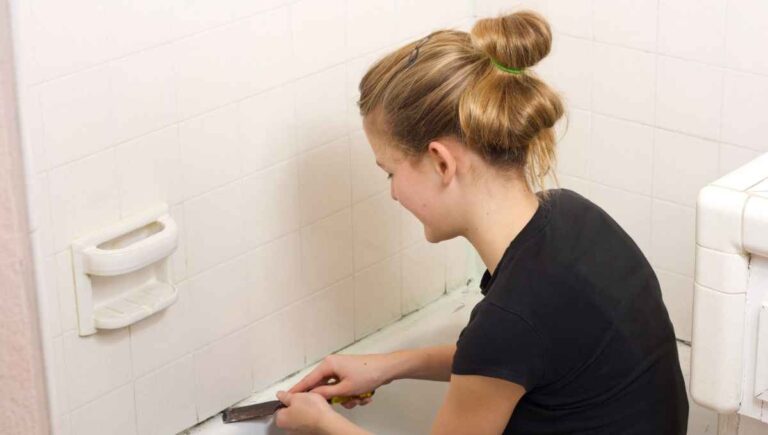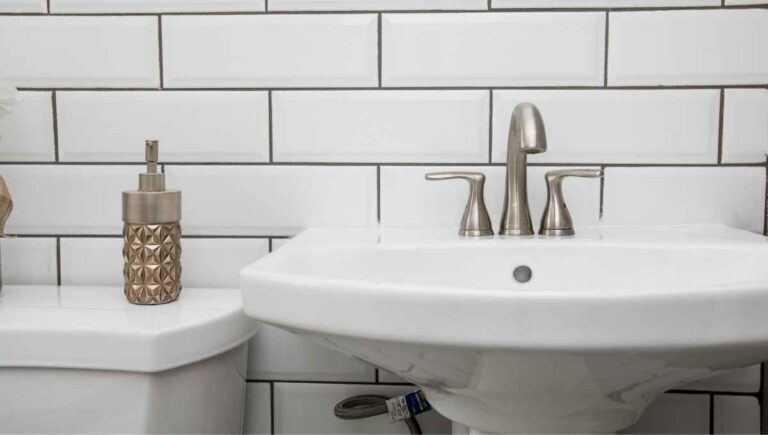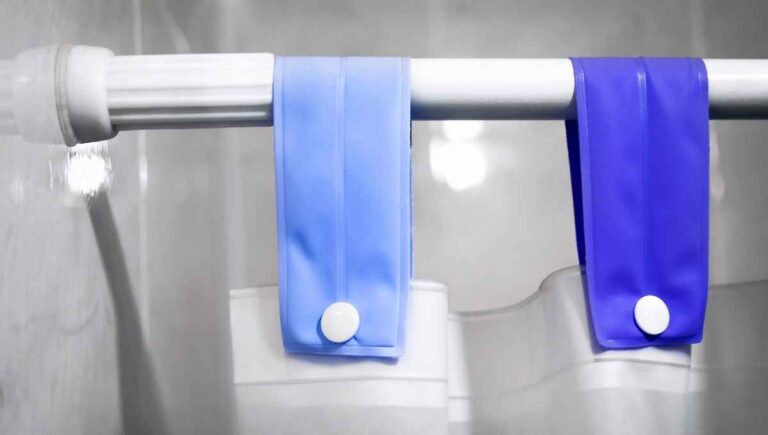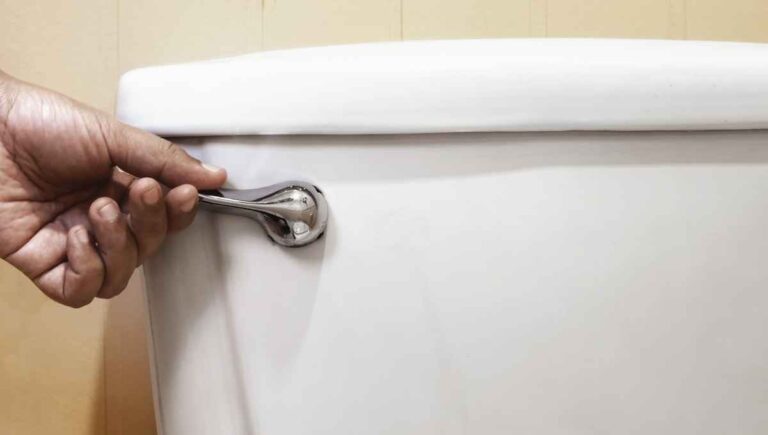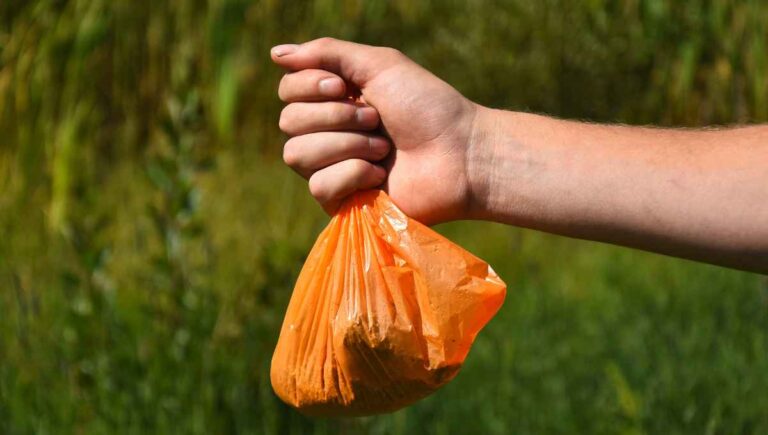Does a Bathroom Sink Need a Stopper? (We Asked a Plumber)
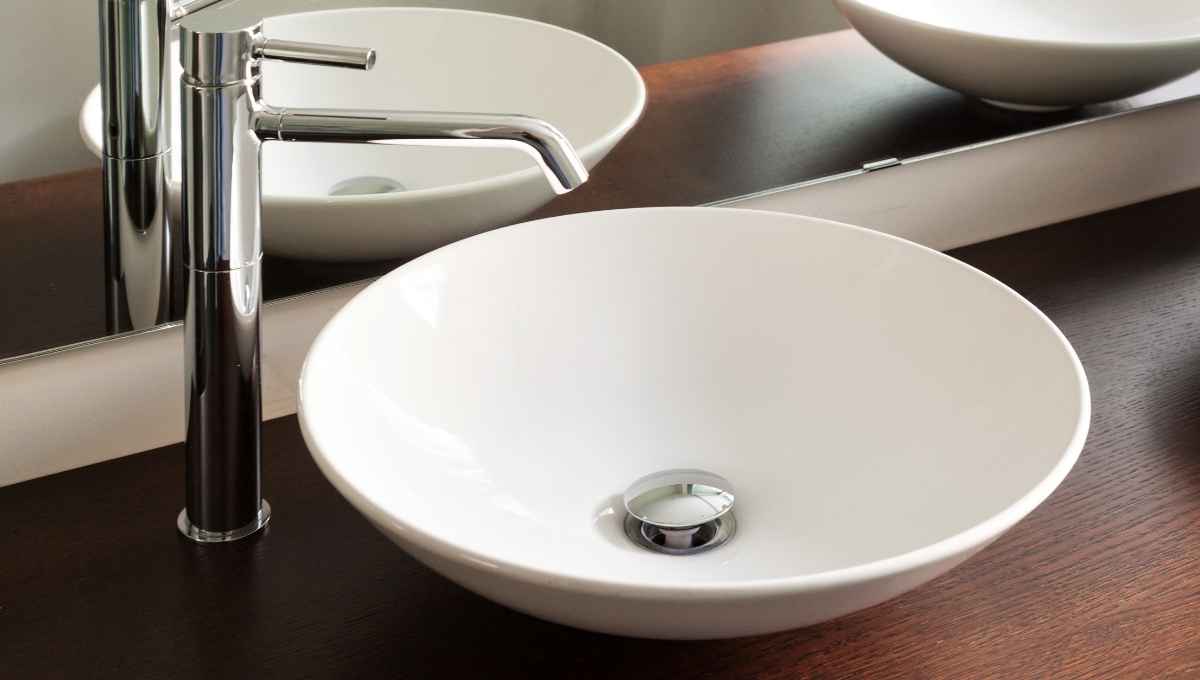
If you’re not the type to hold water in your bathroom sink, it may be confusing to you why you would need a stopper. So, if you’re wondering if your bathroom sink really needs a stopper, we may have some surprising information for you!
Your bathroom sink needs a stopper to function optimally. A stopper helps restrict the drain’s opening, which can help prevent clogs. It also prevents objects other than water from getting lost down your drain pipes. You should always install a new stopper with a new sink or faucet.
That being said, there are lots of other reasons you should keep a stopper in your bathroom sink. This article will explore why a stopper is important, how to install one, and how they work.
This post contains affiliate links. This means Household Blogger may earn a commission should you make a purchase using any of our links. Please refer to our full affiliate disclosure policy for full details.
Here’s a Quick Pro Tip!
A bathroom sink needs a stopper to prevent any unwanted items from entering your sink drain which may lead to unwanted clogs.
If you need a new drain stopper, we will show you our favorites!
Check these out:
1. Pop-Up Stopper – Easy to install and aesthetically pleasing.
2. Standard Stopper – Exactly what you need to finish your renovation.
3. Kitchen Strainer and Stopper – For all your kitchen needs!
Bathroom Sink Stoppers
A bathroom sink stopper is a vital part of your bathroom sink. In this section, we’ll be discussing why sinks come with stoppers and how you can best utilize yours.
Can You Use a Sink Without a Stopper?
A sink will still work without a stopper. That being said, it is considerably safer for you to have a stopper present while you’re using your sink. The stopper prevents anything besides water from being drained down your waste pipes.
If you can’t find the stopper that came with your sink, you may want to consider ordering yourself a new stopper.
They are an almost universal product and should fit your bathroom sink. Plus, they are very easy to install yourself, with no plumber necessary!
Why Do Sinks Have a Stopper?
Sinks have a stopper to help prevent foreign objects from washing down your drainage pipes. So whether it’s a curious child trying to send their toys for a swim, or if you accidentally knock your ring off the counter, you’ll be happy the stopper was there!
Additionally, it’s good to have a sink stopper when you need to hand wash something.
Having the stopper in the drain will keep the soapy water from draining until you’re ready to release it, which helps you save water.
Do Bathroom Sinks Come With Stoppers?
When you buy a new bathroom sink, it should come with a standard drain stopper. It may come separately, but with all the parts necessary to install it yourself.
If your new sink doesn’t come with a stopper, you should buy yourself one.
Not only is it good for keeping water in the sink while you’re washing something, but it also can help prevent foreign objects from being lost down the drain.
What Is the Stopper in the Sink Called?
Typically, the stopper in a sink is either referred to simply as ‘the drain stopper.’ Other common terms include ‘shut-off valves,’ ‘stop valves,’ or ‘pop-up drain stoppers,’ depending on the specific type of sink you have.
Depending on the type of stopper, it may also be called a plug due to the fact that it’s designed to plug up the drain and hold the water in the sink basin.
But, no matter what you call it, every bathroom sink should have a stopper!
You might also enjoy our post on If Kitchen and Bathroom Water is the Same
Is a Pop-up Drain Necessary?
A pop-up drain is by far the most common type of bathroom sink stopper. While the specific type of drain is not strictly necessary, you do want to have a drain and stopper of some type in your bathroom sink.
Having a pop-up drain in your bathroom sink is ideal. It allows you to prevent foreign objects from breaching your drain while still allowing water to flow freely down the drain.
Additionally, you can simply close the pop-up to keep water in the sink as needed.
Installation
Now that we’ve discussed the necessity of a bathroom sink stopper, we’re going to dive into the best ways to install a pop-up drain and other styles of bathroom sink stoppers.
How to Install Sink Pop-up Drain Stopper?
To install a sink pop-up drain stopper, you should start by ensuring all water has been shut off in your bathroom. Then, remove any existing drains from your sink to allow for the new pop-up drain to be installed.
Here are the complete steps to installing a sink pop-up drain:
- Start by ensuring all water has been shut off in your bathroom.
- Remove any existing drains from your sink.
- Clean the surrounding area thoroughly and allow it to dry completely.
- Use plumbers putty around the base of the new flange to keep it in place.
- Replace the drain tailpiece as necessary.
- Insert the new drain stopper, making sure the stopper hole is facing the back of your sink.
- Re-attach the pop-up assembly and test the sink stopper to ensure it closes and reopens properly.
- Re-attach any other pipes, and turn your water back on.
Pop up or Push Down Drain?
There is no clear winner between pop-up and push-down drains. It all comes down to your own personal preference. The only major difference is the push-down drain needs to be pushed down to close it, whereas the pop-up drain is the opposite.
In the end, both drains are fulfilling the exact same purpose, to keep water in the basin of your sink when you want it to and allow water (but not other debris) to drain from your sink when you don’t need it closed.
How to Install a Bathroom Sink Drain
Installing a bathroom sink drain consists of installing three separate parts each with its own steps. Be sure you have the pop-up drain, P-trap adapter, and P-trap ready to go as these are what are needed.
Follow this overview to install your new drain in no time:
- Install your pop-up drain.
- Install your P-Trap adapter.
- Install your P-Trap.
- Test your new drain for leaks.
Of course, this is an overview, and each step has its own complications. If you’re not sure whether or not you’re feeling up to doing this task yourself, it may be best to consult a plumber.
How Do I Install a Bathroom Sink Stopper?
To install a bathroom sink stopper, be sure to turn off the water entering your bathroom. Then, remove any old drain systems before installing the new sink stopper. To start the installation, prep your new pop-up drain by taking all pieces apart.
Here is a complete list of how to install a bathroom sink stopper:
- Turn off your water, then remove any old drain systems.
- Prep your new Pop-up drain by taking all pieces apart.
- Apply your pipe joint compound where the washer fits against the sink and on the underside of your flange pipe.
- Connect all parts together, using plumbers putty as necessary to seal.
- Tighten the assembly parts.
- Insert drain stopper in place. Connect levers and pivot rods. Be sure to check the lever to ensure it’s moving properly and easily.
- Reassemble the trap for your bathroom sink drain. Allow all parts to dry completely.
- Turn your water back on and test for leaks
How Much Does It Cost to Replace a Sink Stopper?
Most sink stoppers cost between $20 – $30. You should also consider the installation costs if you wish to hire a plumber or the tools that you will need if you wish to install it yourself.
We recommend purchasing a full stopper and anti-clogging strainer, such as this one. It comes with everything you need to install it. This means you don’t need any additional tools to do this installation.
You might also enjoy our post on If a Bathtub Drain Can Freeze
How It Works
We’ve got your back if you’re still scratching your head about why your bathroom sink needs a stopper.
In this next section, we’ll be talking more about how stoppers work and why they’re an essential part of your bathroom!
How Does Pop-up Sink Plug Work?
A pop-up sink plug works by using a lever attached to your faucet. When you pull up on that lever, it pulls your sink plug down, closing the sink’s drain and allowing water to fill the sink’s basin.
Then, when you no longer need the water to stand in your basin, you can simply push back down on the lever, which will lower the plug back into the drain.
This allows any accumulated water to empty down the drain.
What Is a Sink Pop-up Drain?
A pop-up sink drain is a style of drain stopper. These stoppers rely on a lever located on the back of the faucet of your sink to lower and lift the stopper into position in order to keep water pooled in your sink.
Releasing the lever allows the water to empty down your sink drain while still blocking part of the flow.
The slight blocking ensures that no other materials besides the water are washed down your drain.
What Can I Use as a Sink Plug?
If you don’t have a sink plug, you can use a small piece of sponge or even a cloth to block the sink. This is a good short-term solution if you need to keep water in your sink, but you’ll want to replace the sink plug in the long term.
Other options for a temporary sink plug include using a material such as plumbers putty to create something similar to a plug to cover the drain hole.
You can also use a flat lid or even plastic wrap to create a seal and keep the water in the basin.
How Does the Bathroom Sink Stopper Work?
A bathroom sink’s stopper works by using a lever system to raise and lower the drain stopper. When the stopper is in its locked position, it creates a seal around the sink drain, stopping water from draining down the sink’s waste pipes.
Once the lever is switched, and the seal is broken, any liquid in the sink is allowed to drain freely. But, of course, the stopper will still block large materials in the sink, preventing clogs.
How Do I Keep Water in My Sink Without the Stopper?
If your stopper is lost or broken, there are other ways to stop up your sink temporarily. For example, you can use a cloth or piece of sponge to plug the sink drain. You can also use a flat lid, piece of plastic, or even dried plumbers putty to help seal the drain temporarily.
Of course, none of these solutions will last forever. So be sure you get a new sink stopper as soon as possible.
Also good to remember that if your sink stopper is broken, you can always get yourself a repair kit.
Standard Sizes
One important question you’ll need to know before you get yourself a new drain stopper is what size stopper you need.
If you are unsure if drain stoppers come in standard sizes, don’t fret, we’re going to talk about that in this next section!
Are Bathroom Sink Stoppers a Standard Size?
We all know that sinks come in a variety of shapes and sizes, but regardless of their aesthetics, almost all bathroom sink drains, and their stoppers are the same size. This is because they all use standard waste pipes.
Unless you’ve special ordered a sink with a different size drain, it is safe to assume that your sink stopper is 1.25 inches across.
This will fit any standard-size sink drain. As a side note, your kitchen sink drain will need a bigger stopper, so don’t assume you can change them out!
Are Bathroom Sink Plugs a Standard Size?
Bathroom sink plugs are almost always the same size. No matter what style of sink you have in your bathroom, the drainpipe should be the same size, and therefore, the sink plug will be the same size as well.
The only exception to this is if you have specially ordered a sink and drain pipe.
If your sink pipe is bigger or smaller than the standard size, of course, you’ll need a non-standard sink plug as well.
Are All Sink Stoppers the Same Size?
All bathroom sink stoppers are the same size. Of course, your kitchen sink will take a different size drain stopper, however. This is because your kitchen sink utilizes a different size drain pipe than your bathroom sink.
Your bathroom sink utilizes a standard 1.25-inch drain stopper, such as this one. On the other hand, your kitchen sink is more likely to need a strainer and stopper set like this one.
These sets are typically around 3.5 inches, much larger than their bathroom sink counterparts.
What Do You Call the Stopper in a Sink?
Most people refer to the stopper in a bathroom sink as a ‘plug.’ You may have also heard it referred to as a ‘pop-up’ or ‘push-down’ stopper. Yet another common name is a ‘shut-off’ or ‘stop’ valve.
While all of these mean basically the same thing, they can refer to the various styles you can buy.
For example, this pop-up stopper looks almost exactly like its counterpart, the push-down version.
How Do I Get My Sink to Hold Water?
If you’ve lost your stopper but you need your sink to hold water temporarily, you can put a small piece of cloth or a kitchen sponge over the drain to hold the water in. You can also use a piece of plastic or a small lid.
If you’re going to use a DIY replacement, just be sure it’s big enough to cover the drain hole. If you cut your sponge or plastic too small, it will just wash down the drain, possibly causing a blockage.
If you’ve run into this problem, we recommend using a drain snake kit to remove the clog!
How To Make a Do It Yourself Overflow Drain Plug
If you temporarily need to cover an overflow drain, you need something just slightly larger than the drain to cover it and prevent water from being able to drain down the pipes. You can use anything from cloth to plastic wrap to do so.
You’ll want to measure the length of the drain opening and cut your material slightly larger.
Then, simply place your material over the drain’s opening and hold it in place (if possible) until the water covers the area and seals it.
You might also enjoy our post on If Bathtubs Need a Vent
Related Questions
What Are Good Bathroom Sink Stopper Alternatives?
If you’ve lost your bathroom sink stopper, your best option is to replace it. However, if that’s not an option, you can use plenty of other objects to cover the drain.
Some good choices include:
- A small piece of sponge
- Plastic wrap
- Plastic lids
- Empty coffee pod (without holes)
- Plastic bag
- Plumbers putty
- Hardened Clay
Why Is My Bathtub Not Holding Water?
If your bathtub is not holding water, your plug is broken. The seal may not be flawless anymore, allowing water to leak down the drain slowly. It may also be that you have a small hole somewhere in the plug itself.
If you have the plug, you may want to consider using some plumbers putty around the plug itself to help reseal any cracks or holes.
This will keep your plug waterproofed and help your bathtub continue to hold water.
Can I Plug My Bath Without a Plug?
There are plenty of short-term solutions to plug your bath without using a proper plug. Of course, you can always rely on a piece of cloth or sponge or use a plastic lid or even plastic wrap to seal the drain temporarily.
Of course, these solutions will only work for so long. You may still experience some water loss if your temporary solution isn’t fully waterproof.
Final Thoughts
Who knew there were so many options to help plug your sink? That being said, nothing beats the aesthetic of the plug that was designed for your sink.
So while a piece of sponge works in a pinch, you’ll want to grab yourself a propper stopper for the long term.








